Grow More Native Plants for Birds
Updated: Jun. 27, 2023
Native trees and flowers in your garden will bring in more birds than ever before. Learn which native plants are best for birds.
Why Birds Need Native Plants
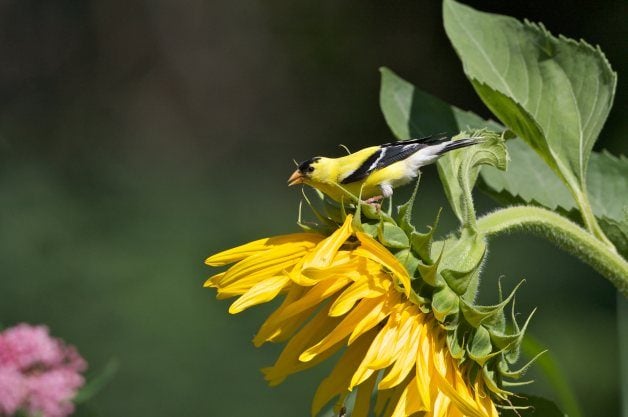
From a bird’s point of view, native plants are like Mom’s home cooking. They’re the tried-and-true foods that keep the birds coming back for more—the berries and seeds that bring in more bluebirds, orioles, goldfinches and a whole long list of other most-wanted species. Birds are already familiar with native plants, which make them a surefire attraction when their seeds or berries ripen. Rose-breasted grosbeaks, scarlet tanagers and about 150 other species recognize them at first sight and quickly descend to the waiting feast.
In terms of food offerings, seeds and berries are the most obvious. But birds are also attracted to something else on the plants that we may never even notice: insects. And native plants hold a trump card: caterpillars. Why should we care about caterpillars? Because they’re a prime target for parent birds who have to satisfy a nest full of begging beaks.
Birds will eat berries and seeds from nonnative plants, but caterpillars are super-finicky, and themselves feed mainly on all-American trees, shrubs and flowers that serve as their nurseries. The birds are more than happy to pluck these crawlers from host plants like red-twig dogwood, blueberries and spicebush.
Insects aside, native plants also serve as building supply stores. To make their nests, birds collect twigs and dead leaves or needles from trees and shrubs, and strip fibers and bark from milkweed, Indian hemp, wild grapevines and other natives.
Choose the Right Native Plants for Your Region
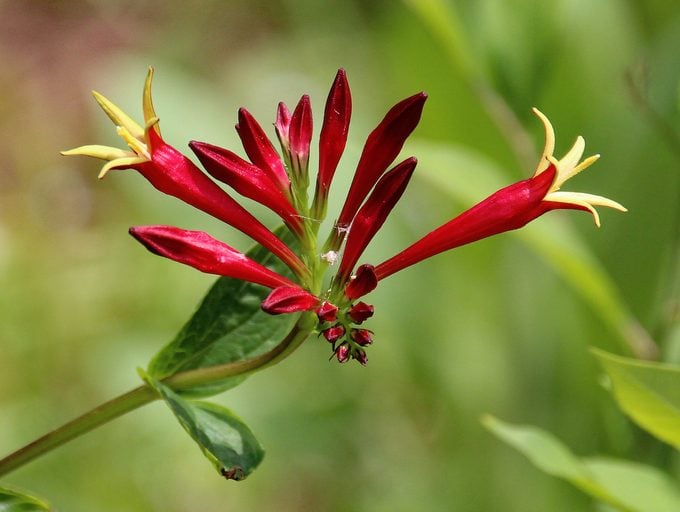
Native plants form symbiotic bonds with birds because the fliers get a bounty of food and in return spread seeds to sprout into new plants. But natives are a big win for us gardeners, too. They are generally hardy, dependable and low-maintenance and require no coddling to thrive and attract birds.
Lately, “native” has become a selling point, a buzzword of sorts, splashed across every plant that originated anywhere in North America. That’s not very helpful, because many natives are very particular about where they’ll grow. The saw palmetto of Florida is an American native, but it’s not going to be happy in Minnesota, nor will Minnesota’s balsam fir feel at home in Florida.
With hundreds of natives to choose from in any area, how do you whittle down the selection? Go for those with the greatest appeal—to both you and the birds. If you’re like me, you want a fast payoff. So focus on native shrubs and small trees for berries, and flowers for seeds.
Unless you know what’s native to your region, look for widespread natives, those that naturally grow across a big swath of North America. Adaptable enough to flourish in a variety of soils and conditions, they’re a good bet for most gardens.
Seed-Bearing Native Plants for Birds
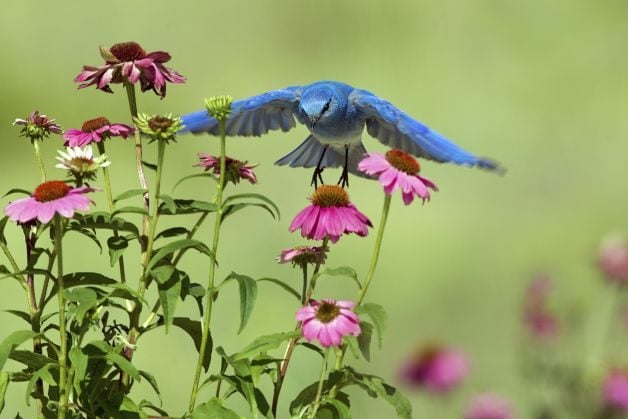
If you’re just getting started planting natives, daisies are a good start to a garden for the birds, because each flower will hold scores of seeds for foraging goldfinches and other friends. All-American native daisies include sunflowers, native asters, black-eyed Susans (avoid Goldsturm, a variety that rarely sets seed) and coneflowers. All are top targets of seed-loving birds.
It’s easy to fill a whole native bird garden with nothing but flowers for birds. Every sunflower, whether it’s fluffy Teddy Bear, skyscraper Russian Giant or a waterfall of perennial Maximilians, got its start as a native plant. So did our purple coneflowers, black-eyed Susans, and that colorful edging of Profusion zinnias.
Birds That Feed on Native Plants
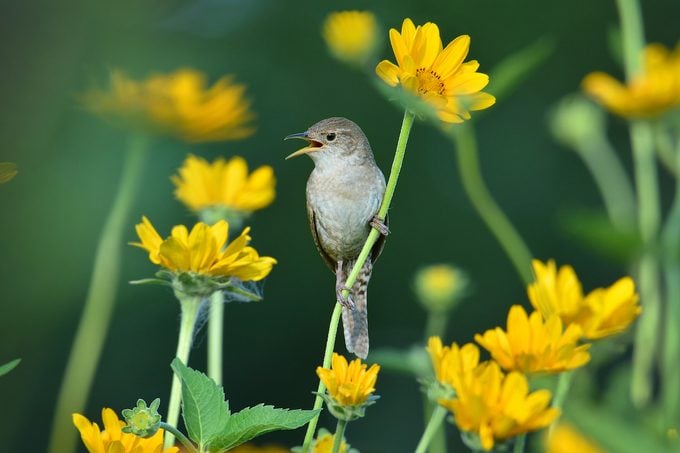
It’s the flowers that catch our eye, of course. They grab the attention of birds, too, but not because they’re beautiful. Birds look a little deeper—to the food these plants provide. Titmice, chickadees, wrens, orioles, tanagers, vireos and other friends will patrol the plants when the flowers are blooming to pick off the pollinating insects attracted to them.
Once the seeds ripen, these plants really blossom as bird attractors. Goldfinches often arrive as soon as the first few seeds mature, even while the plant is still in bloom. They’ll keep coming back for weeks, joined by native sparrows, other finches, jays, woodpeckers, chickadees, cardinals, titmice, nuthatches, towhees, juncos, doves and quail.
Include Native Berry Bushes and Trees
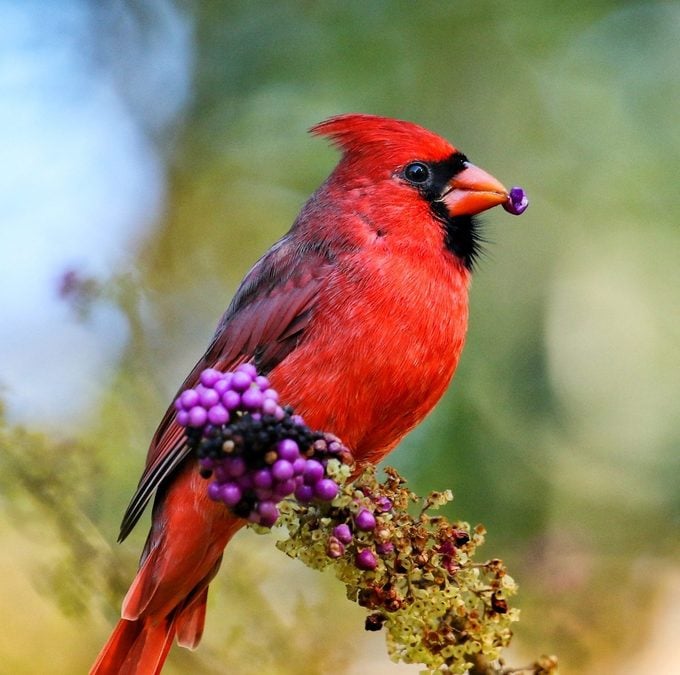
Native berries attract our most-wanted bird friends, including many that aren’t backyard feeder regulars. Bluebirds, thrushes, grosbeaks, tanagers, orioles, thrashers, vireos, warblers, cedar waxwings, great crested flycatchers—more than 100 species—may visit as soon as the crop begins to ripen.
So plant a hedge of elderberries, dot that solid wall of arborvitae with winterberries, add a serviceberry or flowering dogwood to your flower beds, and slip in some blueberries among the azaleas. Birds will strip ripe berries fast, often in just a few weeks. That’s the downside of planting native berries: It works like a charm, but the berries vanish in a hurry. But what a thrill while it lasts! Try some of these berry-producers, broken down by region:
- NORTHEAST: bayberry, lowbush blueberries, American elderberry (Sambucus canadensis), American red elderberry (S. pubens), American mountain ash (Sorbus americana), sassafras, eastern redcedar
- NORTH: currants, gooseberries, highbush blueberries, American red elderberry (Sambucus pubens), American mountain ash (Sorbus americana), sand cherry (Prunus besseyi)
- MIDWEST: sassafras, sand cherry (Prunus besseyi), buffaloberries (Shepherdia spp.), smooth sumac (Rhus glabra), staghorn sumac (Rhus typhina), nannyberry viburnum (Viburnum lentago), blackhaw viburnum (V. prunifolium)
- SOUTHEAST AND SOUTH: evergreen American holly, muscadine grapes, rabbiteye blueberries, Florida elderberry (Sambucus simpsonii), southern wax myrtle, sour gum tree
- WEST: buffaloberries (Shepherdia spp.), Rocky Mountain chokecherry, blue elderberry (Sambucus caerulea), currants, huckleberries, junipers, twinberry shrub honeysuckle
- SOUTHWEST: Christmas berry or toyon (Heteromeles arbutifolia), coffeeberry or California buckthorn (Rhamnus californica), velvet elderberry (Sambucus velutina), mountain red elderberry (S. microbotrys), desert Christmas cactus or tasajillo (Cylindrica leptocaulis)
- NORTHWEST: blue elderberry (Sambucus caerulea), Pacific red elderberry (S. callicarpa), huckleberries, madrone, manzanita, twinberry shrub honeysuckle, western mountain ash (Sorbus sitchensis)
Top 12 Native Plants for Birds
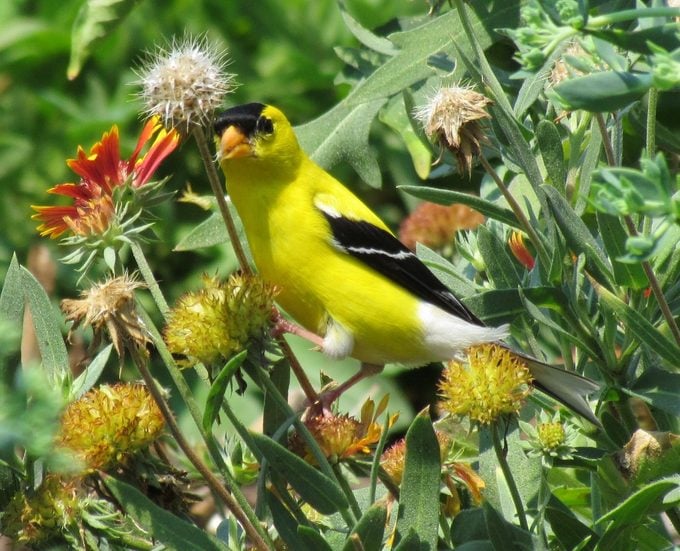
- Asters: many native perennial species, such as calico aster, heart-leaved aster, New England aster, sky blue aster, smooth aster, white wood aster
- Black-eyed Susans: short-lived Rudbeckia hirta, including the rustic-colored mix known as Gloriosa daisy, and perennial R. fulgida
- Blue anise hyssop (Agastache foeniculum)
- Brown-eyed Susan (Rudbeckia triloba)
- Calliopsis (Coreopsis tinctoria)
- Blanket flower (Gaillardia spp.)
- Liatris
- Lupines: many native species, such as the famous Texas bluebonnet
- Mexican hat (Ratibida columnifera)
- Purple coneflower (Echinacea purpurea)
- Sunflowers, annuals and perennials (Helianthus, all species)
- Yellow coneflower (Ratibida pinnata)




















